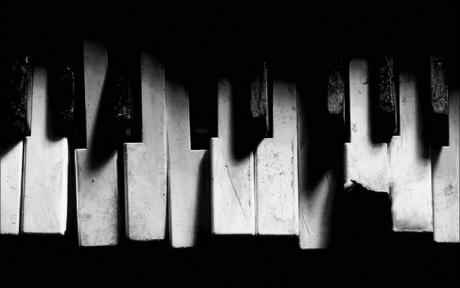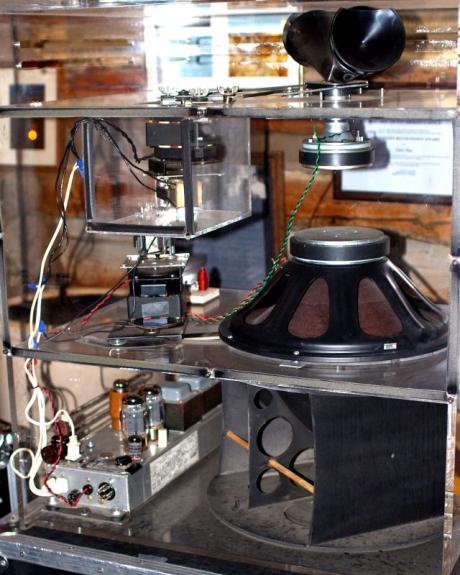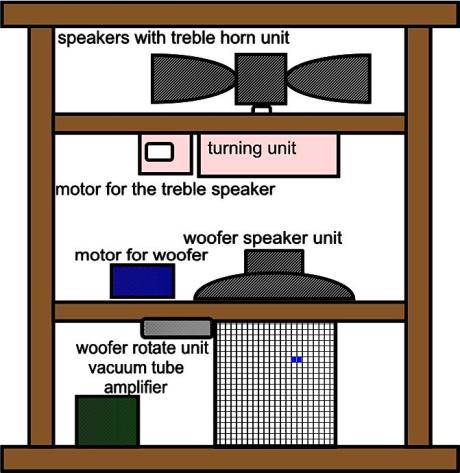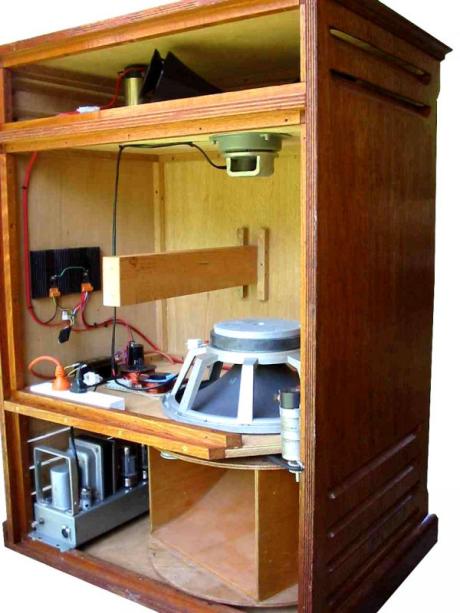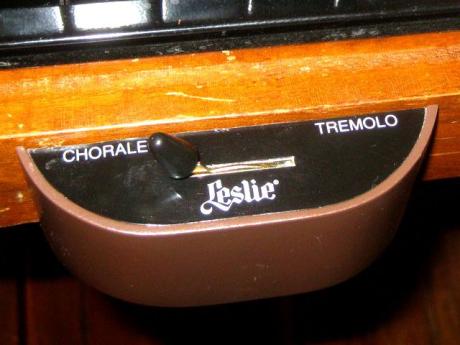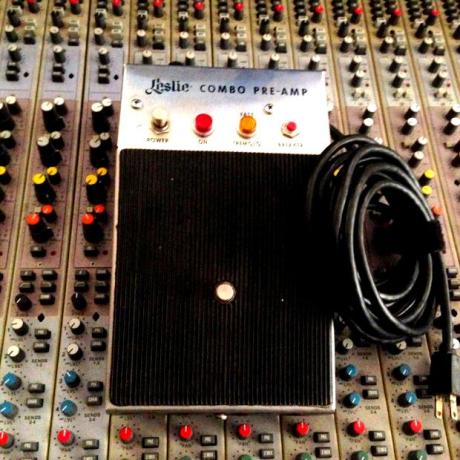Rock Organ XIX - workshop

Leslie Speaker
Don Leslie was working as a radio service engineer at Barker Brothers Department Store in Los Angeles when he bought his first Hammond Organ. Upon getting the unit home, Leslie was a little disappointed with the sound and, using his electronic experience, started to design a speaker to more closely emulate the sound of church organ pipes. Leslie's concept was to emulate this wind driven sound with speakers that would rotate at different speeds. After making a few prototypes, he decided that splitting the high and low frequencies into a rotating drum and horn helped accentuate bass and treble frequencies. Leslie met with Laurens Hammond to show him his new creation.

Surprisingly, Hammond was not impressed. The company even changed the speaker jacks on their organs to make them incompatible with Leslie speakers for a time. The Leslie Vibratone speaker was put into production in 1941 and was marketed as the "Pipe Voice of the Electric Organ". The system consisted of an amplifier and two-way rotating speaker system.The Leslie Speaker has traditionally been used with Hammond B3 organ, but has also been used with guitar and voice. The musician controls the rotation of the two speakers by either an external switch or foot pedal that alternates between a fast, slow and, on some models, a stop setting.

Take a look at picture 1a. This is a diagram of the inside of a Leslie Speaker. What we call a Leslie speaker is actually a number of individual components housed in a usually large wood casing. The audio signal enters the amplifier from an instrument (The green box at the lower left of the image). Once amplified, the signal travels to an audio crossover which splits the sound into separate frequency bands that can be individually routed to each loudspeaker; The high frequencies to the horn on top and the bass frequencies to the bass woofer. Each speaker has a motor for rotation. The top horn also has a visible belt that can be placed on 3 different "gears" for a slightly different spin effect. The audio emitted by the Leslie Speaker has a chorused wind driven sound when the speakers are switched to fast. At the chorale or slow setting there is a gentle swirl to the sound. Great expressive effects can be achieved by manipulating the speeds of the speakers. Learning how to effectively use this spinning to emphasize a new song section or add a different color is the key. Unlike most popular music amplifiers, Leslie speakers use an amphenol connection to interface directly with an organ. A Leslie Speaker gets power as well as audio from this connection. There are different connection chords used but the most classic are 6 pinned connectors that fit into an unusual looking input on the amplifier.


Here's a little trick too: The speaker motors can be stopped by unplugging corresponding electrical lines from the amplifier (usually 2 sets of brown and 2 sets of white electrical plugs). This is a common technique of Jazz players who like to toggle between "break" and "fast" settings on the Leslie even if the switch lacks a stop position.
Here's a great video about a Leslie 122:
Blues guitarists love to play through Leslie Speakers too:
Picture 1b shows what the real thing looks like on the inside. This is a slightly modified 122 model. Notice the tube amplifier to the lower left of the image. These amps are usually driven by 3 or more tubes. The age and quality of the tubes is a constant area of interest and discussion for Leslie aficionados. To the right of the amplifier is the spinning bass bin that the down facing speaker shoots sound into. When the Leslie switch (Picture 1c) is turned to fast, this bin and the top horn begin to rotate quickly, usually in the opposite direction to each other. When the switch is turned off, the speakers slowly come back to chorale or stop settings. To the left of the bass speaker is the crossover which separates the low and high frequencies and sends them to the correct speaker system.
Steve Winwood gives a great example of changing Leslie Speaker speeds in the Spencer Davis Group's hit, Gimme some Lovin:
The organ riff at the beginning uses a slightly distorted organ sound with a chorale or slow Leslie setting. Check out :08 on the youtube clip. I've enclosed some music to give you the idea of what Steve is playing. We can't include exact transcriptions because of copy write laws, but here is my version of this riff. In Musical Ex. 1a, have the vibrato and percussion off, Leslie spinning slowly on the chorale setting. Steve is using his favorite drawbar setting; 84 8848 448. By modifying the output level from the B3, you can easily overdrive the amp on the Leslie for this crunchy sound. For extra credit on your own, read up on the AO-28 Expression Control of a B3. There are controls on the inside of this unit that control the output level, tone, and percussion cutoff.

In Musical Example 1b we have the chorus section of the song. At about :43 on the youtube clip, you can hear how the speaker starts rotating quickly as the switch is moved to fast. Having the experience of how to use this technique effectively is one of the most important and basic keyboard skills. The next time you are listening to a good organist, listen closely to how he controls the speed of the Leslie!
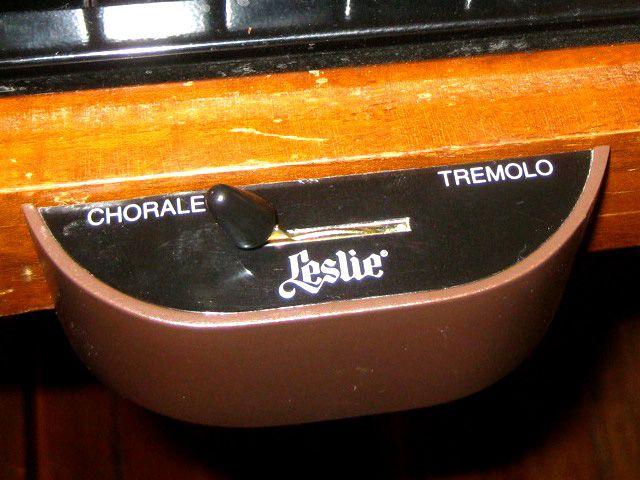
As we mentioned earlier, the Leslie Speaker was also very popular with Blues guitarists like Stevie Ray Vaughan. It also became well known as an interesting effect to use on the voice. When using a Leslie Speaker without an organ it's necessary to have a preamp pedal (Picture 2). With this type of pedal, you can plug any instrument, such as a guitar or vocal mic, into the pedal and in turn into the Leslie Speaker. The preamp pedals usually have a 1/4in Jack to Jack connection. Plug the preamp pedal into the Leslie amplifier in the the same way you would with an organ. Set the volume low and start experimenting!
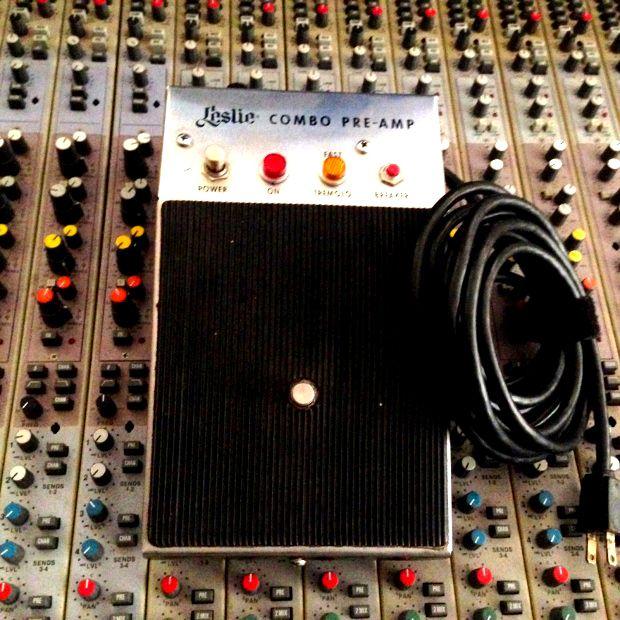
Check out how the Beatles send John's voice through a Leslie Speaker on Tomorrow Never Knows. The effect starts at 1:32:
